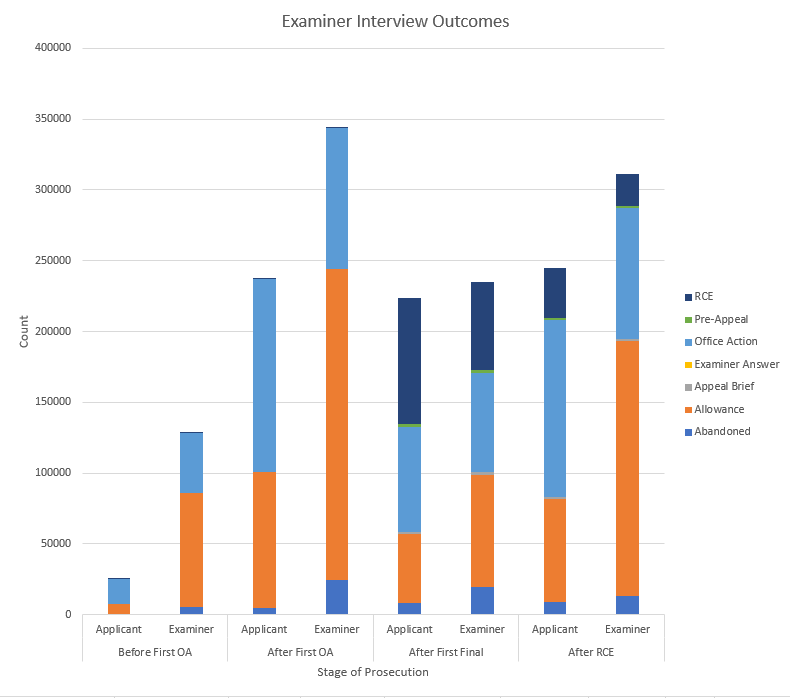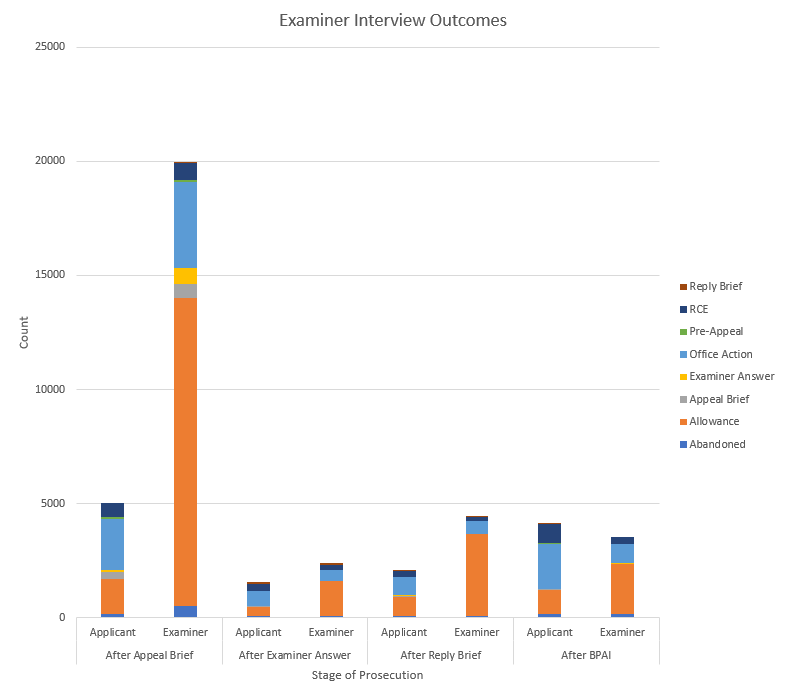I have come across many clients and practitioners that take it as gospel that examiner interviews are always good and should be performed whenever possible. I, on the other hand, have always felt that it is better to pick and choose your spots when conducting examiner interviews. If the Examiner clearly misunderstands your position, or you do not understand hers, then by all means schedule an examiner interview. Likewise, if you are considering some claim amendments, then give the examiner a call to run it by her before wasting time and money submitting it formally only to have it not advance prosecution.
Conversely, setting up an interview in the hope of convincing the examiner that her broadest reasonable interpretation is not in fact reasonable, in my opinion and experience, never works. Even when I get the supervisor involved and unleash the most compelling and eloquent argument ever heard by my own two ears, the interview summary is almost invariably “no agreement was reached.” That’s why I generally don’t pursue interviews unless there is a clear factual error the examiner can’t ignore, or there is a willingness to compromise in terms of an amendment. In the time (and client’s money) I would have spent scheduling, conducting, and summarizing a fruitless interview, I can often (especially if I am bluffing) prepare a pre-appeal conference request or appeal brief that is more likely to get results.
But maybe I am wrong. Maybe I just don’t know the magic words to say to examiners to get them to change their minds. So I decided to start digging into the data. It’s quite a rabbit hole, so I will probably revisit it in the future, but below are the first charts I put together.
The charts show a how many times the next significant event after an examiner interview was an: allowance, abandonment, office action, RCE, pre-appeal brief conference request, appeal brief, examiner answer, reply brief, BPAI decision. The counts are broken down by the stage of prosecution1 and who initiated the interview.
Here are some takeways I found interesting and I would love to hear others’ thoughts (as well as other data/charts you would like to see):
Examiner-initiated interviews are much more likely to result in an allowance.
File this one under “thank you, Captain Obvious.” Presumably the vast majority of these are Monty Hall (Let’s Make a Deal) interviews, with the examiner proposing an amendment that will put the application in condition for allowance and the applicant deciding that a bird in the hand (plus a continuation) is worth two in the bush.
If you are going to conduct an interview, do it before a final rejection
Applicant-initiated interviews after a first action on the merits result in an allowance approximately 40% of the time. Waiting until the application is under final drops that number to 21%. This makes sense. The Examiner has already gotten her count for the final rejection and is looking for the easy points that come with an abandonment or RCE. But look at what happens after you file an appeal brief (second chart below): suddenly an interview to get the application in condition for allowance is much more appealing than slogging through an examiner’s answer.
Applicants initiate a very small number of interviews before a first action on the merits.
Not surprising given that conventional wisdom holds you should never make the first offer in a negotiation. But is such conventional wisdom actually wise here? Its unclear. On one hand, the success rate of applicant-initiated interviews before a first action on the merits is only 27%. On the other hand, this may be a result of small sample size or other confounding factors. A closer look at results of the first-action interview pilot program may shed more light on this subject. (update: a new post about the first action interview pilot program is here)
Want to see how your particular examiner responds to interviews? Look him or her up in BigPatentData Examiner Statistics.
1“Stage of prosecution” always moves from left to right as prosecution of an application advances. For example, once an application has its first RCE, subsequent interviews will always fall into “after first RCE” until an appeal brief is filed.



